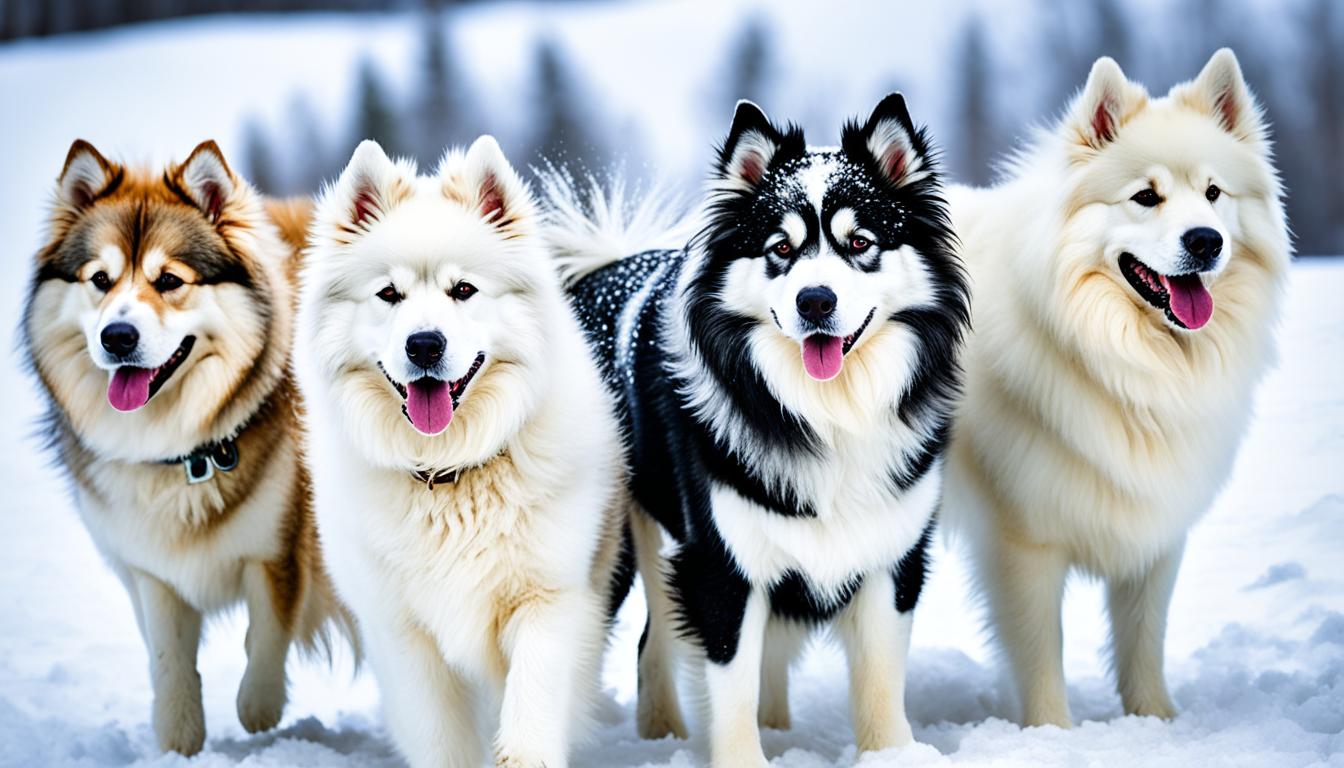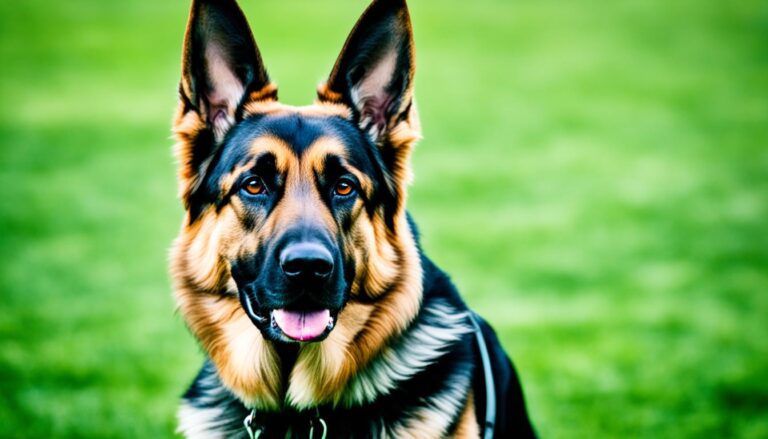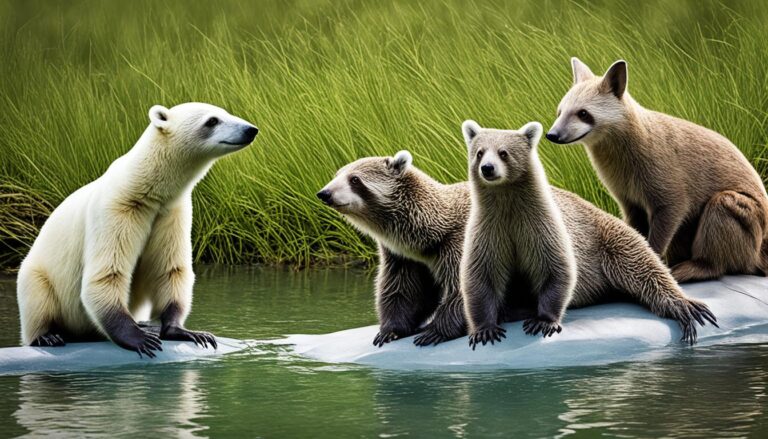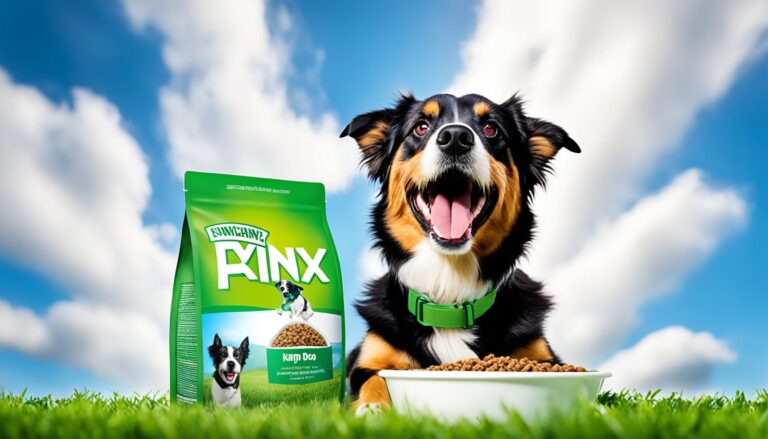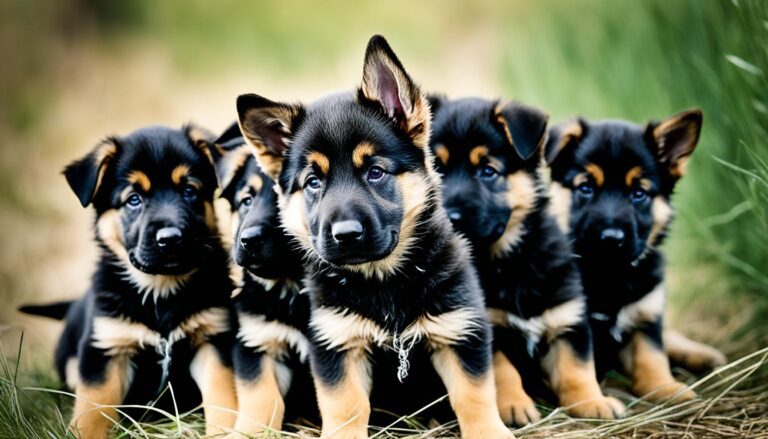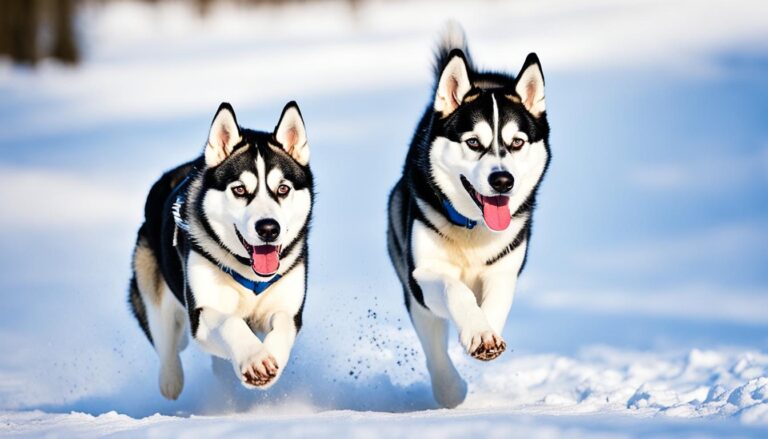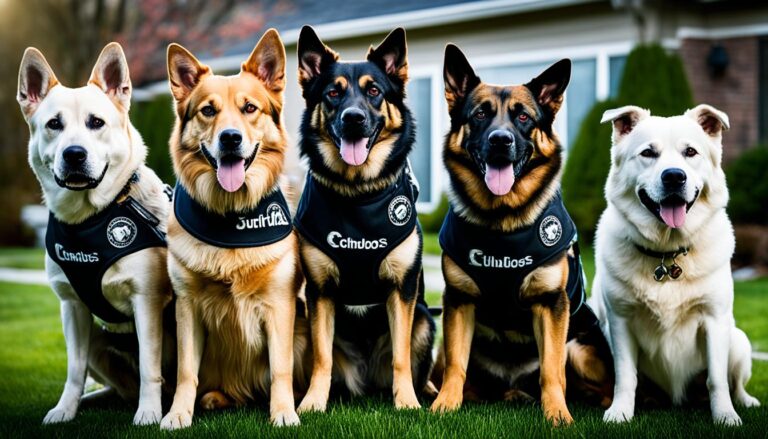High-Maintenance Double-Coated Dog Breeds
Attracted to dogs with thick fur and luxurious coats? Double-coated dog breeds may be just what you’re looking for. These breeds possess a unique and beautiful double coat, but they also come with high grooming needs and maintenance requirements. In this section, we will explore 10 high-maintenance double-coated dog breeds that demand extra attention and care to keep their coats healthy and mat-free.
Key Takeaways:
- Double-coated dog breeds have thick fur that requires regular grooming.
- These breeds need more maintenance to prevent matting and keep their coats healthy.
- Regular brushing is essential to remove loose fur and prevent tangles.
- Some double-coated breeds may require professional grooming and regular bathing.
- Proper care, exercise, and mental stimulation are crucial for the overall well-being of these breeds.
Belgian Malinois: A Smart and Driven Breed
The Belgian Malinois is one of the most intelligent and driven dog breeds, known for their exceptional work ethic and versatility. Originally developed in Belgium for herding livestock, these dogs have proven their worth in various roles, including obedience training, police work, and search and rescue operations.
A Belgian Malinois is not your average family pet. They require a special type of home that can provide them with the mental and physical stimulation they need to thrive. This breed is highly energetic and requires regular exercise to keep them mentally and physically fulfilled.
One way to channel the energy of a Belgian Malinois is through dog sports. Activities like agility and flying disc are perfect for these smart and driven dogs. They thrive in the competitive environment and excel in tasks that require problem-solving skills and physical agility. Participating in dog sports not only provides them with an outlet for their energy but also enhances their bond with their owner.
It’s important to note that Belgian Malinois are not recommended for novice dog owners. Their intelligence and drive require consistent training and mental stimulation. Without proper guidance and mental engagement, a Belgian Malinois may become bored, leading to destructive behaviors and behavioral issues.
Grooming Needs
In terms of grooming, the Belgian Malinois has a short and dense double coat that requires minimal maintenance. Unlike some other double-coated dog breeds, they shed moderately and do not require extensive grooming sessions.
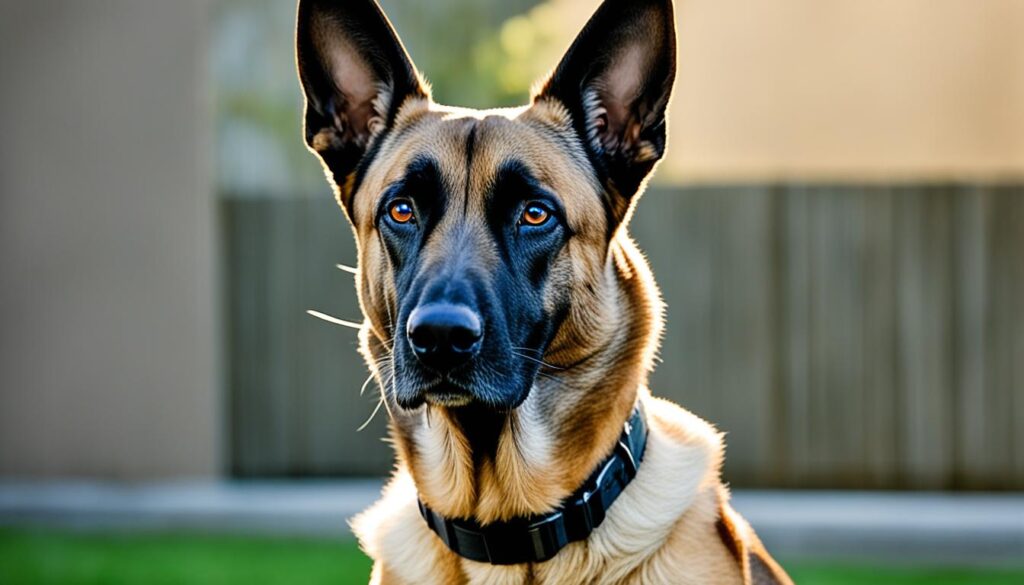
To keep their coat in optimal condition, regular brushing is essential. Brushing removes loose fur and helps distribute natural oils, keeping the coat healthy and shiny. Occasional bathing is needed to keep them clean, but overbathing should be avoided to prevent stripping the coat of its natural oils.
When it comes to training, the Belgian Malinois is highly responsive and eager to please. They excel in obedience training and are quick learners. Consistency, positive reinforcement, and mental stimulation are key to unlocking their potential and fostering a strong bond with these remarkable dogs.
In conclusion, the Belgian Malinois is a breed that requires an experienced and dedicated owner who can provide them with the mental and physical exercise they need. Through dog sports, regular exercise, and consistent training, Belgian Malinois can thrive and reach their full potential as smart and driven dogs.
Puli: Unique Appearance and Grooming Needs
The Puli is a fascinating breed known for its distinctive appearance and unique grooming needs.
This dog breed boasts a double coat that forms into charming cords, resembling dreadlocks. These cords give the Puli their signature look and provide excellent protection from cold weather and harsh environments.
Maintaining and separating the cords is crucial for the Puli’s well-being. It requires a significant amount of time and effort, making this breed high maintenance in terms of grooming.
Regular brushing is necessary to prevent matting and keep the cords clean and healthy. Parting the cords by hand or using a blunt-ended comb is essential to prevent them from fusing together.
“The Puli’s cords not only make them unique, but they also require a specific grooming regimen to keep their coat in top condition.”
Bathing a Puli is quite an undertaking. The cords absorb water like sponges, and it is crucial to ensure they dry fully to prevent mildew and odors. Using a high-velocity dryer can help speed up the drying process and prevent any dampness from lingering.
The unique coat of the Puli requires ongoing care and attention, but the reward is a stunning and distinctive appearance that will turn heads wherever you go.
Tips for Grooming a Puli:
- Regularly brush the coat to prevent matting and maintain the distinct cords.
- Part the cords by hand or use a blunt-ended comb to prevent them from fusing together.
- Use a high-velocity dryer to ensure the cords are fully dry after bathing and prevent mildew.
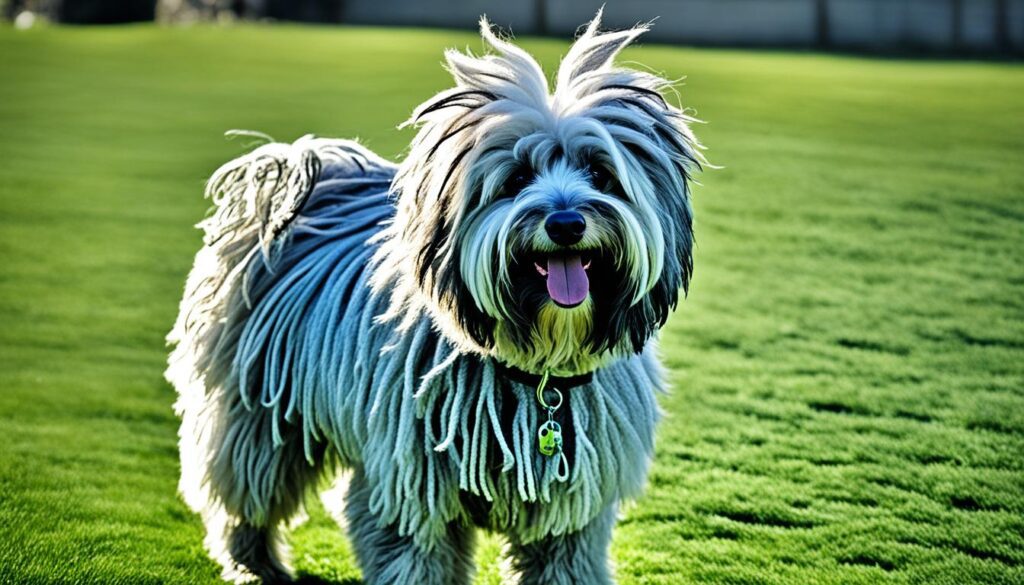
| Characteristics | Description |
|---|---|
| Size | Medium-sized |
| Temperament | Lively, Intelligent, Agile |
| Coat | Double coat that forms into cords |
| Color | Black, Gray, White, or Cream |
| Height | 18-19 inches (Males), 16-17 inches (Females) |
| Weight | 25-35 pounds (Males), 20-30 pounds (Females) |
With its unique appearance and grooming needs, the Puli stands out as a truly remarkable and eye-catching breed.
Siberian Husky: High-Intensity and Escape-Prone
Siberian Huskies are high-intensity dogs with a natural instinct to roam. These beautiful and energetic canines were originally bred for pulling sleds across the arctic tundra. Their high endurance and stamina make them excellent working dogs, but it also means they require plenty of physical and mental stimulation to keep them content.
One characteristic that sets Siberian Huskies apart is their reputation as escape artists. Their innate wanderlust and desire for freedom can lead them to test the limits of any enclosure. Keeping a Husky safe requires a secure high fence that they can’t scale or dig under.
Huskies are also notorious for being unreliable off-leash. Their strong prey drive and independent nature can make recall training a challenge. It’s important to keep them on a leash or in a securely fenced area when outside to prevent them from running off and potentially getting lost.
Regular exercise is crucial for keeping a Siberian Husky physically and mentally well-balanced. These high-intensity dogs need plenty of opportunities to burn off excess energy. Activities such as long walks, runs, or engaging in dog sports like agility can help fulfill their need for exercise and mental stimulation.
Training Tips for Siberian Huskies
- Start obedience training early to establish a strong foundation.
- Use positive reinforcement techniques such as treats and praise to motivate your Husky.
- Provide consistent and firm leadership to ensure your Husky understands their boundaries.
- Enroll in obedience classes or work with a professional dog trainer for additional guidance.
“Siberian Huskies require a dedicated owner who can provide them with the physical exercise and mental stimulation they need.”
Overall, Siberian Huskies are high-energy and intelligent dogs that thrive in an active and stimulating environment. With the right training, exercise, and a secure living space, they can be loving and loyal companions for those who appreciate their unique nature.
Conclusion
Double-coated dog breeds, such as the Belgian Malinois, Puli, and Siberian Husky, are known for their high maintenance grooming needs. To keep their fur in optimal condition, regular brushing is essential. This helps remove loose fur and prevents mats from forming, ensuring the health and beauty of their coats.
In addition to regular brushing, some double-coated breeds may require professional grooming and regular baths. These grooming sessions not only keep their coats clean but also help maintain the texture and shine of their fur. It is important to follow a grooming regimen specific to each breed to ensure their needs are met.
Aside from grooming, double-coated breeds also require regular exercise, mental stimulation, and training. These breeds thrive when they have an outlet for their energy and intelligence. Daily walks, interactive toys, and training sessions are all ways to keep them healthy and happy.
In conclusion, double-coated dog breeds are high-maintenance, but with the right care and attention, they can be wonderful companions. By following the appropriate grooming regimen, providing regular exercise and mental stimulation, these breeds can lead happy and fulfilling lives.
FAQ
Do high-maintenance double-coated dog breeds require regular grooming?
Yes, high-maintenance double-coated dog breeds, such as those with thick fur, require regular grooming to keep their coats healthy and prevent mats from forming. Brushing their fur several times a week is necessary to remove loose fur and maintain optimal coat condition.
Are there specific dog breeds with high grooming needs?
Yes, there are several dog breeds known for their high grooming needs. These breeds have double coats and include breeds such as the Pomeranian, Chow Chow, and Shetland Sheepdog. Regular brushing and maintenance are essential for these breeds to keep their fur healthy and prevent matting.
How often should I bathe a double-coated dog?
It is generally recommended to bathe a double-coated dog every 6 to 8 weeks, or as needed. However, certain breeds may require more frequent baths due to their specific coat type or activities they engage in. It’s important to use a dog-specific shampoo and properly dry the coat after bathing to prevent skin issues.
Can I groom my double-coated dog at home?
Yes, you can groom your double-coated dog at home, but it’s important to learn the proper techniques and use the right tools. Regular brushing, in addition to trimming the fur around the ears, paws, and hindquarters, can help keep your dog’s coat in good condition. Consider seeking professional grooming help for specific breed requirements or if you’re unsure about certain grooming tasks.
How can I prevent my double-coated dog from matting?
Regular brushing is essential to prevent matting in double-coated dog breeds. Use a slicker brush and a comb to remove loose fur and gently work through any tangles. Pay special attention to areas prone to matting, such as behind the ears, under the armpits, and around the tail. Trimming the fur in these areas can also help prevent mats from forming.

